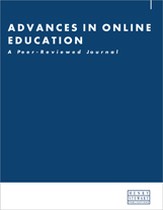Evidence-based online content design
Abstract
The online learning landscape is undergoing a profound transformation driven by advancements in technology, cognitive sciences and generative AI (GenAI). This shift necessitates a move from traditional content-centred models to human-centred, active and dynamic learning experiences. To navigate this evolution, the Penn Foster Group established a Design Lab in 2023, focusing on design shifts, motivational research, personalised learning and media efficacy testing. Central to these efforts is the development of the LAADS model, which emphasises learner-centred, authentic, active, differentiated and skill-based learning. This model aims to create engaging, emotionally resonant learning experiences that foster critical thinking, creativity and a sense of accomplishment. By integrating real-world problems and offering personalised learning pathways, the LAADS model seeks to improve student outcomes and transform online education into a more meaningful and community-driven experience. The ongoing development of courses using this model on the D2L Brightspace platform aims to optimise these design principles for significant improvements in student success.
The full article is available to subscribers to this journal (subscription is free).
Author's Biography
Andrew Shean Dr Andrew Shean is the Chief Learning Officer at Penn Foster Group, a leading digital workforce development platform for in-demand, middle-skills occupations. Andrew leads the development and delivery of academic and non-academic learner support, including the development of the Design Lab and the LAADS learning model, the institution’s assessment strategy, targeted learner support interventions, accreditation standards adherence and academic operations. He earned his Doctor of Educational Leadership and Management from Alliant International University, his Master of Education from the University of Northern Colorado, and his BA in sociology of education from the University of Northern Colorado.
Bivin Sadler Dr Bivin Sadler earned a BS in mathematics magna cum laude from Texas Tech University. He began his career at Motorola in Scottsdale, Arizona, as a statistician and software engineer, focusing on a Six Sigma tool for predicting software release timings. He later moved to San Diego to complete a Master’s degree in applied mathematics at San Diego State University. Returning to Dallas, Bivin earned a PhD in statistics from Southern Methodist University (SMU), where he received the Walsh Award for the top score on the qualifying exam. Upon completing his PhD in 2014, Bivin joined SMU’s faculty, teaching both undergraduate and graduate statistics courses and contributing to the Master of Science in Data Science (MSDS) programme. He has presented his research in item response theory at various conferences and is engaged in several consulting projects. In August 2018, he became a full-time faculty member in the MSDS programme, where he continues to teach, consult, and develop new courses in time series and business analytics.
Cynthia Lewis works at Penn Foster Group in Product UX Research and Design. Her background encompasses information architecture, quantitative user experience (UX) research and design, learning science and motivational psychology. She earned her Master’s in library and information science from the University of Wisconsin, Madison, with a focus on information systems and UX design. Currently, Cynthia is pursuing her doctoral degree in psychology at National University, San Diego, where her research centres on the psychological drivers of user experience and human behaviour. Her expertise in integrating motivational theory into UX and learning design positions her as a key contributor to advancing the understanding and practice of user experience in education.
Citation
Shean, Andrew, Sadler, Bivin and Lewis, Cynthia (2025, March 1). Evidence-based online content design. In the Advances in Online Education: A Peer-Reviewed Journal, Volume 3, Issue 3. https://doi.org/10.69554/VYFW8955.Publications LLP
